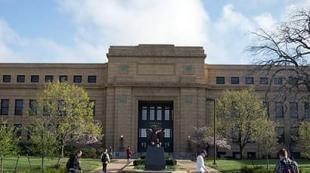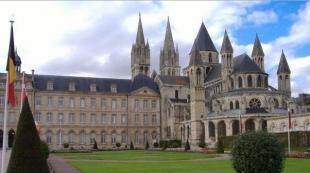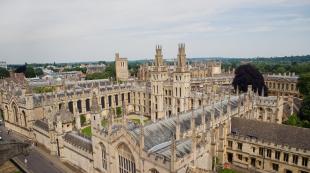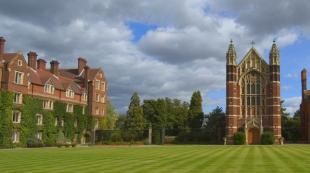Lesson "A fairy tale is a lie, but there is a hint in it ..." (everyday fairy tale "How a man divided geese"). How a man divided a goose - Latvian folk tale Signs of a fairy tale how a man divided geese
Hello young literary critic! It's good that you decided to read the fairy tale "How a man shared a goose (Latvian fairy tale)" in it you will find folk wisdom, which has been edified by generations. In works, diminutive descriptions of nature are often used, making the picture that appears even more intense. Despite the fact that all fairy tales are fantasy, however, they often retain the consistency and sequence of events. Devotion, friendship and self-sacrifice and other positive feelings overcome all opposing them: anger, deceit, lies and hypocrisy. All images are simple, ordinary and do not cause youthful misunderstanding, because we are faced with them every day in our everyday life. Once again, rereading this composition, you will certainly discover something new, useful and edifying, essential. Often in children's works, the personality traits of the hero, his resistance to evil, constantly trying to knock the good fellow off the right path, become central. The fairy tale "How a man shared a goose (Latvian fairy tale)" can be read for free online countless times, without losing love and desire for this creation.
Once upon a time there was an old peasant. His hut is completely rotten, and he decided to put a new one, but there is no forest. He breaks his head where to get it. And in those days, the peasants could get timber for new buildings only from the master. So he thinks how he could drive up to the master. He carried his goose to the gentleman and the lady for a treat. The master admitted him to him. The peasant tells that, they say, the forest needs a new hut, the old one, they say, has completely rotted away. Then he remembers the goose that he brought with him, gives it to the master. And the master looked and said:
- There are five of us, how can we divide one goose for all?
- Nothing, sir, tell me, I will share.
- Come on, show me how it's done!
When the goose was plucked, the old one took up the carve-up: he cut off the head and neck and gives it to the owner himself:
- To you, as the head of all honorable gentlemen, - all the wisdom and power over this little creature.
Then he cut off both wings, gives them to the lady and daughter and says:
- And this is for you with your beautiful daughter, so that your darlings can flutter in the sky.
Then he cuts off both legs and gives to both barchuk:
- And this is for the sons of the master, so that they are diligent and dexterous. And the rest is for me to share.
The master and the lady only marvel at how cleverly the old man divided the goose! And to celebrate, they give him as many forests as he wants. The peasant - don't be a fool - has rolled up a hut for himself, which is your master's palace: two chimneys, high windows, wide doors. The neighbors are looking and wondering how he was able to build such mansions, when the very penny was not a broken soul. It turned out that all this was obtained for one goose. Here one old man also took it into his head: "Wait, I have six geese, if they are demolished, then the master will give me to the forest."
He brought all his geese to the master and asks for a forest for a new barn.
- Okay, okay, but how can we be, dear? You have six geese, and there are five of us!
The old man thought, he doesn't know, poor fellow, what to do. And the master remembered that he had recently had one peasant. who shared the goose so wonderfully, but everyone was happy. I ordered to call him to me. Here comes that old man, and they tell him to divide the six geese equally into five people. The peasant looked, did not hesitate for a long time and said:
- I will help, if there is a need for that. Here's how we will divide them! Let's analyze everything in threes. You, a gentleman and a lady, and one goose - three. You, both sons, and again one goose is a three, and these two goose and a young lady are also a three. Only two geese left! Let's do it this way! I and two of them are also three. That's all equally and got.
All mouths were astounded. For such dexterity, the master gave the forest not to the one who asked, but to the one who divided, for his ingenuity. Now this man has built a new barn for himself, and the other was left with nothing.
Once upon a time there lived an old peasant. His hut has completely rotted away, and he decided to put a new one, but there is no forest. He breaks his head where to get it. And in those days, the peasants could get timber for new buildings only from the master. So he thinks how he could drive up to the master. He carried his goose to the gentleman and the lady for a treat. The master let him in. The peasant tells that, they say, the forest needs a new hut, the old one, they say, has completely rotted away. Then he remembers the goose that he brought with him, gives it to the master. And the master looked and said:
- There are five of us, how can we divide one goose for all?
- Nothing, sir, tell me, I will share.
- Come on, show me how it's done!
When the goose was plucked, the old one took up the carve-up: he cut off the head and neck and gives it to the owner himself:
- To you, as the head of all honorable gentlemen, - all the wisdom and power over this little creature.
Then he cut off both wings, gives them to the lady and daughter and says:
- And this is for you with your beautiful daughter, so that your darlings can flutter in the sky.
Then he cuts off both legs and gives to both barchuk:
- And this is for the sons of the master, so that they are diligent and dexterous. And the rest is for me to share.
The master and the lady only marvel at how cleverly the old man divided the goose! And to celebrate, they give him as many forests as he wants. The peasant - don't be a fool - has rolled up a hut for himself, which is your master's palace: two chimneys, high windows, wide doors. The neighbors are looking and wondering how he was able to build such mansions, when the very penny was not a broken soul. It turned out that all this was obtained for one goose. Here one old man also took it into his head: "Wait, I have six geese, if they are demolished, then the master will give me to the forest."
He brought all his geese to the master and asks for a forest for a new barn.
- Okay, okay, but how can we be, dear? You have six geese, and there are five of us!
The old man thought, he doesn't know, poor fellow, what to do. And the master remembered that he had recently had one peasant. who shared the goose so wonderfully, but everyone was happy. I ordered to call him to me. Here comes that old man, and they tell him to divide the six geese equally into five people. The peasant looked, did not hesitate for a long time and said:
- I will help, if there is a need for that. Here's how we will divide them! Let's analyze everything in threes. You, a gentleman and a lady, and one goose - three. You, both sons, and again one goose is a three, and these two goose and a young lady are also a three. Only two geese left! Let's do it this way! I and two of them are also three. That's all equally and got.
All mouths were astounded. For such dexterity, the master gave the forest not to the one who asked, but to the one who divided, for his ingenuity. Now this man has built a new barn for himself, and the other was left with nothing.
Sections: Primary School
Purpose: to continue acquaintance with the concept of "fairy tale - chain".
Educational:
- to acquaint children with the Russian folk tale "How a man divided geese";
- improve reading technique;
- replenish vocabulary;
- to learn deeply and fully to analyze and evaluate the read;
- instill a love for oral folk art;
- to introduce children to creative activities.
Developing:
- develop thinking, attention, memory, speech, observation of the word;
- to form in children a conscious reading with whole words;
- develop speech skills, creativity;
- activate the children's vocabulary.
Educational:
- foster a sense of collectivism, hard work, kindness, friendliness;
- foster interest in reading, love for folk art;
- express their attitude to the interaction of the characters with each other, evaluate their actions.
Equipment:
A classroom with a multimedia projector, a presentation for a lesson, children's songs, didactic materials for an educational lesson: printouts with a fairy tale, cards for group work, cards for vocabulary work, a chest with hearts.
During the classes
I. Organizational moment. Psychological attitude
The bell rang for you
All entered the class calmly.
All stood at the desks beautifully,
We greeted politely.
Let's join hands together
And let's smile at each other!
We will work together
We shouldn't be lazy!
Respiratory and articulatory gymnastics
Before starting work, I suggest you do some exercises, but not quite usual. Charger for voice and tongue.
And we will do this exercise to prepare for expressive reading.
1. Blow out the candle.
Take a deep breath and exhale all the air at once, blowing out one large candle.
Now imagine that there are three candles on your hand. Take a deep breath and exhale in three portions, blowing out each candle.
Imagine you have a birthday cake in front of you. There are many small candles on it. Take a deep breath and try to blow out as many small candles as possible, making as many short exhalations as possible.
2. In a flower shop.
Imagine walking into a flower shop and smelling the delicious scent of flowering plants. Take a noisy inhalation through your nose and exhale (2-3 times).
3. Cubs.
Imagine that you are little bears and ask your mother - bears to eat.
Words should be pronounced in a drawn-out manner, in a bass, clearly pronouncing the sound [m]. "Mom, we would have honey, mom, we would have milk."
4. In the elevator.
Imagine we are riding an elevator and announcing floors. The higher the floor, the higher the voice, and vice versa. We go first from the first to the ninth, and then down.
They sat down quietly, backs straight.
I see our class wherever,
Well, let's start the lesson, friends!
II. Introduction to the topic
Look guys, what is this thing? (magic ball)
Who guessed in which works the magic ball appears? (in fairy tales)
What role does he play in fairy tales? (guide)
Guys, who guessed what we are going to talk about today in the lesson? (about fairy tales)
The ball will travel through fairy tales, and we will go with it.
And also teach you guys, but :. what?(think, reason, read expressively).
III. Preparation for the main stage
Let's remember what a fairy tale is?
Look where our ball has rolled? (to the electronic explanatory dictionary).
Let's check the correctness of your reasoning.
(Read by a well-read student from the slide)
Fairy tales appeared in Russia a very long time ago, when people did not know how to write and read, they were not written down, but simply told to each other, passed from mouth to mouth.
What three types of fairy tales do you know? (household, about animals and magic)
Our little ball will lead you through the fairy-tale kingdom, and you be careful, memorize fairy tales and try to determine what type of fairy tales they belong to?
(Film with fairy tales)
What fairy tales have you seen, remembered and what type are they?
IV. Physics minute "Kolobok"
Guys, who is the hero and from which fairy tale appeared on the screen?
We'll have a rest with him now!
V. Learning new material
Staging
Our little ball has appeared again, which means that something interesting will happen now. He brought us to a lesson from the past of fairy-tale heroes.
Look closely at an excerpt from a fairy tale and try to guess what it is called? (dramatization of an excerpt - grade 4)
The rich peasant heard that the master rewarded the poor peasant with bread and money for a goose, roasted five geese and carried it to the master.
Barin says:
Well, thanks for the geese. Yes, here I have a wife, two sons, two daughters - all six. How can we divide your geese equally?
The rich man immediately hesitated and says:
No, sir, I won't share the geese for you.
The master sent for the poor peasant and ordered to share.
Yes, perhaps I can share that, too, ”the poor man replies.
Who guessed which fairy tale our heroes came from?
Dictionary work.
a) In a fairy tale you will meet a word "master". What does it mean? (look at the main
hero and compare with an adult of today).
b) And there will also be an expression "awarded with money and bread." How do you understand it?
Viewing an e-book.
Now we are on e-book Let's see and echo in an undertone the fairy tale "How a man divided geese."
What is an "echo"? (children's answers)
Analysis of the tale.
What type of fairy tales does it belong to?
Name the main characters of the tale (the hero gets up, bows and approaches the teacher).
Which of these heroes did you like best? Why?
Guys, there are main characters in the tale, and what other characters? (neutral)
What kind of heroes are they? Name them.
Working with text (printout)
A. Reading the text in pairs "student - teacher, teacher - student" by paragraphs (by color marks). Appendix 2.
How a man divided geese
The guy says:
- I will share.
And he gave wings to his daughters.
The rich peasant heard that the master rewarded the poor peasant with bread and money for a goose, roasted five geese and carried it to the master.
Barin says:
The rich man began to think and came up with nothing.
The master sent for the poor peasant and ordered to share.
- There are three of you with a goose.
He gave one to his sons:
- And you, - he says, - three.
He gave one to his daughters:
- And there are three of you.
And he took two geese for himself:
B. Analysis of the text (game "Journalists").
Now guys, let's check how you understood the text. Let's play a game "Journalists" with you.
How do you understand this word?
Now you introduce yourself how journalists do it, and ask our heroes questions, what interests you about this tale. Annex 1.
Vi. Working in groups
Here again, our guide has appeared, which will lead us into the world of knowledge and discoveries.
Now we will work in groups and try to change the fairy tale so that the rich man does not end up in a stupid situation next time, and the main characters will definitely help you with this.
| Problematic question | Tasks |
| What character traits of a hero could be useful to you in life? | Compare the character traits, actions of the poor and rich men (similarities and differences)? Choose from the qualities you listed those that will be useful to you in life. |
| How could a rich man be persuaded not to go to his master? | Come up with words and actions that could convince a rich man not to go to the master. Choose the sentences you want to use to make your statements more convincing. |
| How can a fairy tale be changed so that a rich man no longer finds himself in a stupid situation? | Remake the tale so that both characters are positive. Choose from the data (or your own) proverbs and sayings that fit your new fairy tale. |
Group 1, your problematic question?
To solve this problem, you had to complete 2 tasks (Children answer questions).
Conclusion of the 1st group: What qualities of character could be useful to you in life? And so on (similar check of all groups).
Vii. Lesson summary
The ball is very tired and invites us to draw conclusions from what we have seen and read.
What fairy tale did you meet today in the lesson?
What type of fairy tales does it belong to?
The ball brought us back to the beginning of the topic, read it again and tell me, what lesson did you learn from this tale?
What proverb fits this tale very well? Why?
In your new fairy tale with a happy ending, a master and a rich man save a poor man and his family from hunger and poverty.
So, what qualities did a rich man possess? (kindness, friendship, understanding, cordiality).
A kind word, a kind heart are the flowers of the human soul. So let's not skimp, let's generously give them to others every day!
And let's start today ?!
See what lies in our trunk? (Heart)
So where is politeness and kindness? (In our heart)
And to make us a little warmer today, we will give our warm kind hearts to each other.
To the music, children give hearts to each other and our guests
And I would like to end today's lesson with these words:
Do not stand aside indifferently
When someone is in trouble.
You need to rush to the rescue
Any minute, always.
And if someone ever helps
Your kindness, your smile.
You are happy that the day was not lived in vain
That you do not live the years in vain!
VIII. Reflection
Well, now, guys, the heroes of our fairy tale, I want each of you to evaluate your work.
Before you are two envelopes, the following expressions are written on them:
1 K. - In the lesson, I counted the crow (forced myself to work).
2 K. - I listened and remembered, did not lose a minute (I enjoyed working in the lesson)
Glue a palm sticker next to the envelope with which you agree.
You all enjoyed this tutorial. I am very happy about that!
Thank you for your work, for your participation!
IX. Homework
- 1 group draws the beginning of a fairy tale
- Group 2 - the main part
- Group 3 - ending
Annex 1
Sample questions for the game "Journalists":
Hello! I, Bogdan Anatolyevich, from the magazine ":", I want to ask the poor man: why did you bring the last goose to the master? You already had nothing to eat? "Thank you in advance.
Hello, my name is Polina Alekseevna, I am from the program ":", I have the following question for the master: please tell me, master, what would you do if the poor man didn’t share your goose? ”Thank you.
Hello! My name is Victoria Denisovna, I am from the program ":", I have a question for a respected poor man: how to understand your following expressions: the master's head - he is the head of the whole house, his wife's back - she's at home and looking at the house, sons' legs - trample paternal paths, wings for daughters - will they fly away from home soon? Thanks.
I'm from the program ":", my name is Danil Maksimovich. I have a question not for the main characters, but for the narrator: Anastasia, with what words does the beginning of the tale begin (i.e. the beginning of the tale) and what is its ending. Please read it. Thank you very much for your answer.
And I, Diana Maksimovna, from the program ":", I want to appeal to you, a rich man. Here the poor man clearly and clearly wanted to improve his financial situation, he wanted at least some bread, but why did you bring this present, you also have nothing to eat? "Thank you.
Hello dear guests from the past! I, Anastasia Petrovna, from the magazine ":" and I have a question of the following plan for the poor peasant: what helped you make such wise decisions when carving up geese? Thank you (and the fear of being left without bread and money, and Russian ingenuity).
Hello, I, Elizaveta Nikolaevna, from the program ":", I want to ask the kind gentleman: why were you not angry with the poor peasant, because he took most of the geese for himself twice, and was deceiving you? Thanks.
Hello! I, Vladimir Andreevich, from the program ":", would like to immediately ask the master: why did you punish the rich man then, he never even deceived you, but simply could not share the geese? Thanks.
Appendix 2
How a man divided geese
One poor peasant had no bread. So he decided to ask the master for bread. To have something for him to go to the master, he caught a goose, roasted it and carried it.
The master took the goose and says to the peasant:
- Thank you, man, thank you for the goose; I just don’t know how we will divide your goose. Here I have a wife, two sons and two daughters. How can we divide a goose without offense?
The guy says:
- I will share.
He took a knife, cut off his head and said to the master:
- You are the head of the whole house - your head.
Then he cut off the back, serves it to the lady.
- You, - he says, - to sit at home, to look behind the house - you have a back.
Then he cut off the paws and serves them to his sons.
- You, - he says, - legs - trample paternal paths.
And he gave wings to his daughters.
- You, - he says, - will soon fly away from the house, here's a wing for you. And I'll take the remnants for myself!
And he took all the goose for himself. The master laughed, gave the peasant bread and money.
The rich peasant heard that the master rewarded the poor peasant with bread and money for a goose, roasted five geese and carried it to the master.
Barin says:
- Well, thanks for the geese. Yes, here I have a wife, two sons, two daughters - all six. How can we divide your geese equally?
The rich peasant began to think and did not come up with anything. The master sent for the poor peasant and ordered to share.
The poor man took one goose, gave it to the master and the lady, and says:
- There are three of you with a goose.
He gave one to his sons:
- And you, - he says, - three.
He gave one to his daughters:
- And there are three of you.
And he took two geese for himself:
- Here, - he says, - and there are three of us with geese, all equally.
The master laughed and gave the poor peasant more money and bread, and drove the rich away.
Lesson objectives:
- Continue to form students' reading comprehension techniques: to teach predicting the content of the text based on the illustration and the title.
- Improve students' reading skills.
- To develop in schoolchildren the ability to divide the text into parts according to a ready-made plan.
- To develop the speech, thinking of children.
- To foster moral feelings in students.
During the classes.
Ι Organizational moment. The floorboard creaks about something
And the spoke can't sleep again,
Sitting on the bed pillows
Ears have already perked up ...
And immediately the faces change
Sounds and colors change ...
The floorboard creaks quietly
A fairy tale walks around the room.
ΙΙ. Knowledge update. Homework check.
1. Answers to questions.
What is the name of the section that we are studying?
"And the scientist cat told me his tales ..."
Look at the blackboard. What do you see?
(Roof, window.)
We have a roof, a window, but no house. Let's build a house of fairy tales.
(On strips of "logs" - answers.)
- - What is a fairy tale? (Genre of oral folk art.)
The teacher builds a house from "logs".
- - Who skillfully told fairy tales? (Storytellers.)
- - What kinds of fairy tales do you know? (Magic, household, animalistic, heroic.)
- - According to the authorship, there are fairy tales ... (Folk,
literary.)
5) - What unites the tales of different peoples?
(The main theme is the struggle between good and evil.)
Remember the fabulous "signs" and name them.
(Initiation, "threefold" repetition, magical heroes, magical events, ending, fixed expressions.)
- Checking d / z.
What fairy tale have we read recently?
("Nikita Kozhemyaka".)
What kind of fairy tales does this fairy tale refer to?
(Heroic.) Why? (Describes a historical event).
What character traits did Nikita Kozhemyaka have?
(Strong, brave, defender, resourceful).
Tell us how Nikita Kozhemyaka overcame the snake.
Ahead of us is a new meeting with an interesting fairy tale.
ΙΙΙ. Working with text before reading.
1. Working with the title.Frontal conversation.
Read the title of the tale. ("How the man divided the geese.")
What is the topic of the lesson. ( Theme:)
The teacher opens the card.
2. Working with illustration.
Consider the illustration.
Whom do you see? (A man is resting on the stove, a woman with children.)
What kind of fairy tales do you suppose this fairy tale can be attributed to? (Household.) Why?
Is it possible to assume by the name of the tale and the illustration,
what will it be about? (The man was resting. The wife was busy with the children.
Someone asked him to share the geese.)
Do you think it is possible to divide one goose among all? How?
(You cannot divide. You can.)
Let's read how a man divided a goose in a fairy tale.
ΙV. Working with text while reading.
- Reading part 1 "to myself".
- Read part 1 of the fairy tale "to yourself". Mark with a pencil
words, the meaning of which is not clear to you.
Did our assumptions come true?
2. Dictionary work.Work in groups with Ozhegov's dictionary.
In the fairy tale test, you came across difficult words. The meanings of some of them can be found ... (According to the explanatory dictionary.)
Team up in groups. Find and read the meaning of the specified word. (Each group has one word.)
Landlord - a rich man who owns land.
Peasant - a villager who works on the land,
Raises livestock.
The hotel is a gift.
Barin - appeal to a rich person.
The estate is the land of the landowner.
Kul is a bag.
- Examination. (One speaker per group.)
Have we found the answer to the question of how the man divided the goose? (Yes.)
Selective reading. Read how he did it?
Why did the master give Stepan a gift? (For cleverness, originality.)
What can you say about Stepan?
On the desk.
(Stepan will help the neighbor share the geese.)
- Reading "aloud" according to the plan of the second part of the tale.
Let's divide the text into parts according to the plan as we read it.
Plan.
1) Visiting a poor peasant.
2) A present for the master.
Read 1 title of the plan. What will part 1 be about?
Reading "aloud" the excerpt before the sentence "She did not stand for a long time, come home quickly."
Why did the rich peasant not go to his neighbor himself, but sent his wife? (He does not want to seem interested; he looks down on Stepan.)
Did Stepan's wife tell everything? (No, she did not tell what exactly Stepan was generously awarded for.)
What do you think the rich peasant will do?
(He will go to the landowner with a gift, he will carry a lot of geese.)
Read the title of part 2 of the plan.
Show a signal while reading when the part is over.
Reading "aloud" an excerpt before the sentence "When a rich man came to a landowner."
Answers on questions:
How do you understand “the rich man and his wife were very envious? Card (envious). How do we call such people now? (envious).
(They envied the neighbor.)
So what are they? (Greedy.)
What can you say about Evdokim?
On the desk:
(Evdokim)
How many geese did Evdokim bring the landlord?
(Five geese.)
Why not one, but five geese?
(I wanted the master to reward him generously, more than a neighbor.)
(The landlord will ask him to share the geese for everyone.)
Do you think the master will reward the rich peasant?
There is one more part left. Let's read it.
Reading out loud the last passage.
Did the master reward a rich peasant?
(No, we didn't find out, he didn't share the geese.)
What can you say about Evdokim? (Let's add his characteristics.)
How can the third part of the plan be titled? (How to split the geese?)
Who will help divide the geese? (Stepan.)
Do you think Stepan will cope with the task?
- Reading "to yourself" 3 parts. Work in pairs.
1.- Read part 3 of the story and prepare 1 content question for your neighbor.
(Children read part, ask questions to each other.)
2. Verification. (The teacher asks the student: - What question did you ask your neighbor? How did you answer?)
How did a man split 5 geese?
(I gave 1 goose to the master and his wife - there were three of them.
I gave 1 goose to their sons - there were three of them.
I gave 1 goose to the master's daughters - there were two of them.
He took the remaining 2 geese - there were three of them.)
V. Working with the text after reading.
How did the fairy tale end?
(The master generously rewarded Stepan.)
What did he give him for?
(For the mind, ingenuity.)
Additionally:
Read on the chalkboard a quote from the 15th century English scholar Francis Bacon, who wrote:
"One man's stupidity is another's good fortune."
Do you agree with this statement?
Who in a fairy tale can be called stupid? (Evdokim.)
Why? (could not separate the geese.)
Who was lucky? (To Stepan.)
Why?
(The master rewarded him generously.)
For what did the landowner reward him? (For intelligence, ingenuity.)
Can we say that "the stupidity of one is luck for the other?"
A folk tale is a source of wisdom. What does this tale teach us?
(Be resourceful, savvy.)
And then luck will be on your side.
VΙ. Lesson summary. Reflection.
- Did you like the fairy tale? Which of the heroes did you like? Why? What caused the difficulty? Who did it work?
VΙΙ. Homework.
Creative task. Prepare to stage a fairy tale.
Leo Tolstoy, the tale "How a man divided geese"
Genre: literary everyday fairy tale
The main characters of the fairy tale "How a man divided geese" and their characteristics
- Poor man. Poor but cunning.
- Barin. Cheerful, good-natured, generous.
- Rich. Stingy and envious.
- The Poor Man's Last Goose
- The family of the master
- Fair division
- Reward
- Five rich man's geese
- The rich man's embarrassment
- Section geese
- Another reward.
- When the peasant ran out of bread, he roasted a goose and took it to the master
- The master asked to divide the goose into six people
- The poor man divided the goose, and took most of it for himself
- The rich man, having learned about this, took five geese to the master
- The master asked the rich man to divide five geese into six people and he could not
- The poor man gave one goose for a couple of people and took two geese for himself.
A good joke will always help and benefit.
What does the fairy tale "How a man divided geese" teaches
This tale teaches us to approach problem solving in an unconventional way, teaches us how to joke, teaches that envy and greed bad qualities person. Teaches that laughter makes a person kinder.
Review of the fairy tale "How a man divided geese"
I really liked a very funny and instructive story about a poor man and geese. The poor man showed that he has a good imagination and a sharp mind, and the mind is in many ways much more important than wealth. I liked the poor guy's geese section and I think he deserves both the geese and the reward.
Proverbs to the fairy tale "How a man divided geese"
Need for invention is cunning.
The cunning one will always find a loophole.
The envious person dries up due to someone else's happiness.
Read summary, a short retelling of the fairy tale "How a man divided geese"
Once the poor peasant had completely run out of bread, there was nothing to sow, there was nothing to eat. The man decided to ask the master for help, and in order not to go empty-handed, he hammered and roasted the last goose.
A man brings a goose to the master, asks for bread. And the master tells him that he has two sons, two daughters, and a wife. How to divide one goose into all?
A man, without hesitation, gives his head to the master, as to the head of the family, gives the back to the lady, as if sitting at home. He gives the legs to his sons, because they choose the path in life, and he gives the wings to his daughters - they will marry, fly away from their father's house. Well, the man takes the rest for himself.
The master laughed. He liked this section. He gave the poor man both bread and money.
A rich neighbor found out about it and was envious. I roasted five geese at once and took them to the master. And the master again lists his family and asks how to divide five geese into six people?
The rich man can think of nothing, he only scratches his head.
The master sent for the poor man. He came and immediately began to divide. He gave one goose to the master and the lady and said that there were three of them now. I gave one goose to my sons, there were three of them too. I gave one more goose to my daughters - and there were three of those. Well, he took two for himself - there were also three of them.
The master laughed for a long time, again gave money to the poor, and drove the rich from the yard with sticks.
Drawings and illustrations for the fairy tale "How a man divided geese"









